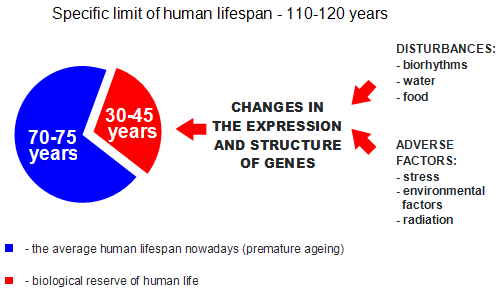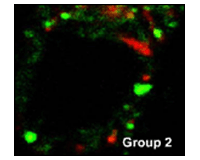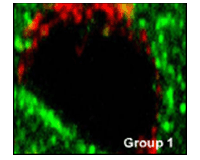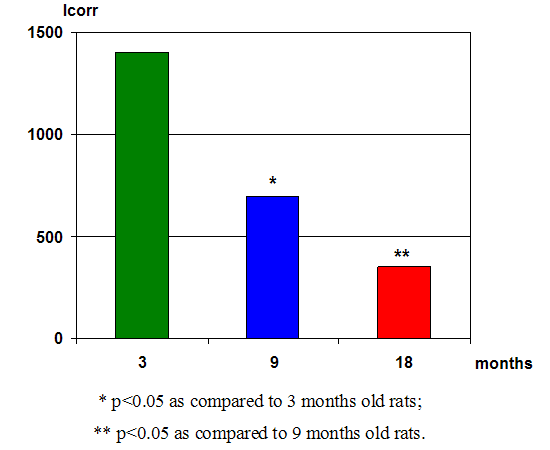Entdeckung der Bio Regulatoren
Entdeckung der Bio Regulation
Es ist bekannt, dass die spezifische Grenze der tierischen und menschlichen Lebensdauer um ungefähr 30-40% höher liegt als ihre mittlere Lebensdauer. Es konnte auf die Auswirkung von unerwünschten Faktoren zurückgeführt werden, die Veränderungen in der Genstruktur und der Expression hervorrufen, begleitet von Störungen in der Proteinsynthese und Organismusfunktion (Abb. 1).
Fig. 1. Potenzielle Zunahme der durchschnittlichen menschlichen Lebenserwartung bis zur spezifischen Grenze (biologische Reserve).
Zu Beginn der 1970er Jahre untersuchten wir den Mechanismus der Immundepression sowohl experimentell als auch klinisch. Wir fanden heraus, dass mit dem Altern eine Involution des zentralen Organ des Immunsystems – Thymus (Abb. 2, 3) und der des neuroendokrinen Systems – Zirbeldrüse stattfindet. Wir haben auch eine deutliche Abnahme der Proteinsynthese in Zellen verschiedener Organismusgewebe registriert (Abb. 4).
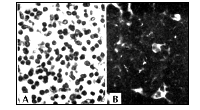
A – Hämatoxylin- und Eosinfärbung;
B – thymische Poly-Bioreaktoren Fluoreszenz in den Körpern und Prozessen von Epithelzellen, die Klark-Alveolen bilden, sowie Granulate auf den Thymozytenmembranen in den Alveolen.

A – Hämatoxylin- und Eosinfärbung;
B – thymische Poly-Bio-Regulator-Fluoreszenz in den Körpern und Prozessen von Epithelzellen, die Gruppen von 2-5 Zellen bilden. 2. Altersbedingte Involution von Thymus (indirektes Immunfluoreszenzverfahren mit Antikörpern gegen thymische Poly-Bioreaktoren, x600).
| Groups (age) |
Optic density (у.е.) |
Area of expression (%) |
| 1 (0.5 – 4 years) |
2.05±0.06 | 3.36±1.54 |
| 2 (65 – 79 years) |
0.54±0.02* | 1.24±0.06* |
| 3 (80 – 95 years) |
0.39±0.01* | 0.99±0.03* |
| * р < 0.05 as compared to Group 1 | ||
Immuno fluorescence laser confocal microscopy, х400 (red fluorescence – Rodamin G, green fluorescence – FITC).
Fig. 3. Expression of transcription proteins (PAX 1) in human thymus epithelial cells (the study was conducted in cooperation with Prince Philippe Biomedical Research Center, Valencia, Spain).
Fig. 4. Protein synthesis in hepatocytes of rats of different age.
To restore functions of thymus, pineal gland and other organs we developed a special method for isolation, refinement and fractionating of low-molecular bio regulators from extracts of these organs [fusion_builder_container hundred_percent=”yes” overflow=”visible”][fusion_builder_row][fusion_builder_column type=”1_1″ background_position=”left top” background_color=”” border_size=”” border_color=”” border_style=”solid” spacing=”yes” background_image=”” background_repeat=”no-repeat” padding=”” margin_top=”0px” margin_bottom=”0px” class=”” id=”” animation_type=”” animation_speed=”0.3″ animation_direction=”left” hide_on_mobile=”no” center_content=”no” min_height=”none”][12, 13]. Low-molecular bio regulators isolated from thymus (preparation Thymalin) and pineal gland (preparation Epithalamin) of animals were studied in different biologic models. These bio regulator preparations contributed to a reliable increase in animals mean lifespan in numerous experiments (Fig. 5) [12, 13, 14, 15, 16, 17]. Of particular importance is a correlation between mean lifespan and the main index of cellular immunity (reaction of blast-transformation of lymphocytes with phytohaemagglutinin) determining T lymphocytes function (Fig. 6) [14].
Fig. 5. The increase in the average lifespan up to the specific limit after bio regulator preparations application (mean results after 15 experiments).
Fig. 6. Bio regulator preparations effect on mean lifespan and reaction of blast-transformation of lymphocytes with phytohaemagglutinin in mice.
A significant increase in the mean lifespan of animals was evidently caused by a reliable antitumoral activity (Fig. 7) of low-molecular bio regulators isolated from thymus and pineal gland [14, 15, 17, 18, 19].
Fig. 7. Effect of pineal gland preparation on the frequency of tumor incidence in animals.
Small bio regulators isolated from different organs and tissues as well as their synthesized analogues (di-, tri-, tetrapeptides) revealed a realiable tissue specific (gene specific) effects both in cellular cultures and in experimental in young and old animals (Fig. 8).
Fig. 8. Bio regulator tissue-specific (gene-specific) regulation.
Bio regulator tissue specific activity manifested in stimulation of protein synthesis in cells of those organs they had been isolated from. The enhancement of protein synthesis under the effect of bio regulator has been registered in young and old animals (Fig. 9).
Fig. 9. Effect of the liver and pineal bio regulator preparations on protein synthesis intensity in hepatocyte monolayer culture in rats of different age.
Especially significant appeared restoration of reproductive function system in old female rats subjected to the pineal bio regulator treatment (Fig. 10) [13]. Estrus phase in animals, analogous to menopause in women, lowered from the initial 95% down to 52% after the preparation administration, while other phases of the cycle, typical of the normal estrus, increased from the initial 5% up to 48%. It should be emphasized that in a special experiment initially none of the rats got pregnant after mating. Repeated mating after the administration of the pineal gland bio regulator entailed pregnancy in 4 out of 16 animals which gave birth to 5-9 healthy off-springs each.
Fig. 10. Effect of bio regulator preparation of the pineal gland on constant estrus in old female rats.
Thus there were ascertained main advantages of low-molecular bio regulators: they possessed high biologic activity, revealed tissue specificity and were neither species specific nor immunogenic. These features make regulatory bio regulators similar to bio regulator hormones [16, 20, 21].
A detailed study of molecular weight, chemical properties, amino acid composition and sequence of low-molecular bio regulators isolated from thymus, pineal gland and other organs had been carried out for many years [22, 23, 24, 25, 26]. The obtained data were used for chemical synthesis of several small bio regulators. A comparative analysis showed that biological activity of natural and synthetic preparations was largely identical. Thus, for example, thymus dipeptide stimulated immunity [24, 25]. Biological activity of natural and synthetic bio regulators appeared to be similar in standard testing in tissue cultures and in animals [27, 28, 29, 30]. These results demonstrate prospects for application of these bio regulators as geroprotectors [31, 32, 33]. The necessity of searching for new drugs – geroprotectors dictated the onset of preclinical studies of these preparations on different structural levels.
On the level of the organism in different animals we have registered a significant variety of biologic effects exerted by small bio regulators especially by bio regulators of thymus and pineal gland, including proliferative activity and apoptosis [34, 35, 36, 37, 38, 39, 40, 41, 42].
On the level of cellular structures, small bio regulators activate heterochromatine in the cell nuclei in senile patients (Table 1) [11, 43].[/fusion_builder_column][/fusion_builder_row][/fusion_builder_container]

